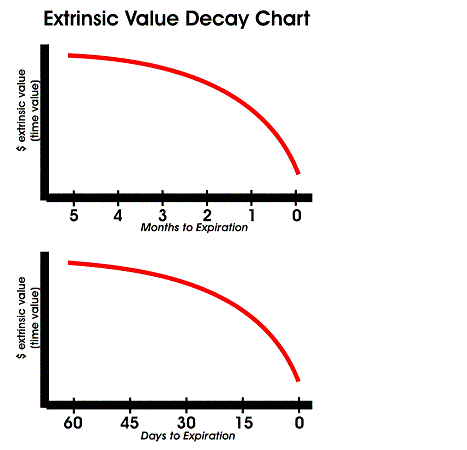
Part 1: Parity & Stock OptionsProvided By Options University How Parity Will Affect Your Stock Options
When we discuss parity in terms of options, we say that parity
is the amount by which options are in the money. Parity refers
to the options trading in unison with the stock. This also means
that parity and intrinsic value are closely related. When we
say that options are trading at parity, we mean that the options
premium consists of only its intrinsic value.
For example, if Microsoft was trading at $53.00 and the January 50 calls were trading at $3.00, then the January 50 calls are said to be trading at parity. Under the same guidelines, the January 45 call would be trading at parity if they were trading at $8.00. So, parity for the January 50 calls is $3.00 while parity for the January 45 calls is $8.00 Now if these calls were trading for more than parity, the amount (in dollars) over parity is called premium over parity. Thus, the term premium over parity is synonymous with extrinsic value. If the options are trading at $53.00 and the January 50 calls are trading at $3.50 then we would say that the calls are trading at $0.50 over parity. The $0.50 represents the premium over parity that is also the amount of extrinsic value. The $3.00 is the amount of intrinsic value or parity. The term time decay is defined as the rate by which an options extrinsic value decays over the life of the contract. This concept can be illustrated by the charts below:
Volatility is defined as the degree to which the price of options or other underlying instrument tends to move or fluctuate over a period of time. Implied Volatility is a value derived from the options price. It indicated what the markets perception of the volatility of the options or underlying will be during the future life of the contract. Options that have a wide trading range (moved around a lot) is said to have a high volatility. Options that have a narrow trading range (does not move around much) is said to have a low volatility. The importance of volatility is that it has the single biggest effect of the amount of extrinsic value in an options price. When volatility goes up (increases), the extrinsic value of both the calls and the puts increase. This makes all the options prices more expensive. When volatility goes down (decreases), the extrinsic value of both the calls and the puts decrease. This makes all of the options prices less expensive. Discover these secret option trading strategies that will have your friends calling YOU 'the options expert' Click here!
copyright 2005 Options
|
